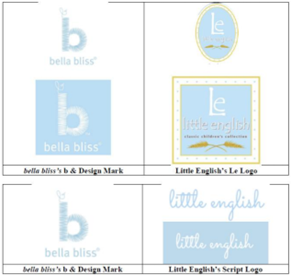Sixth Circuit sheds light on degree of similarity necessary for competing marks

After a de novo review, the US Court of Appeals for the Sixth Circuit reversed a district court’s motion to dismiss a number of infringement claims. It found that the competing marks were sufficiently similar to avoid dismissal, and that the attorneys’ fee award could not be claimed (Bliss Collection LLC v Latham Companies LLC, Case 21-5723, 21 September 2023, Mathis, Bush, JJ, Larsen, J, dissenting).
Background
This dispute between Bliss and Latham was the latest instalment in a series of cases involving the two children’s clothing companies, after a Bliss founder left the business to start Latham as a competitor. Here, Bliss sued Latham for infringement on three trademarks for Bliss’s stylised lowercase ‘b’ logo, appearing as if stitched in thread.
Bliss sued Latham for federal copyright infringement, federal trademark infringement, federal trade dress infringement, federal false designation of origin and misappropriation of source, federal unfair competition, and both trademark and unfair competition under Kentucky law.
The competing marks are depicted below:

Latham moved to dismiss. In response, the district court dismissed the federal copyright and trade dress claims. It did not initially dismiss the remaining claims but did so later after a motion for reconsideration. The district court determined that Latham was not entitled to attorneys’ fees because the case was unexceptional, and because Bliss had brought the suit in good faith. Bliss appealed the federal trademark infringement, federal trade dress infringement and trademark infringement under Kentucky common law only.
Court decisions
The Sixth Circuit focused its analysis on whether the amended complaint properly alleged that Latham’s logo used Bliss’ trademark. The court noted that dismissal was not warranted for anything except the most extreme cases. Concluding that this was not such a case, the decision to dismiss was reversed.
Further, the Sixth Circuit found that Latham used the accused mark "in a trademark way" (ie, to identify goods). Then, considering the Frisch factors to determine likelihood of confusion between the marks, the court found that the similarity between the marks and their impressions favoured Bliss’ infringement claim, despite the fact "that the logos share no words or homophones".
Overall, the court found that five of the eight factors favoured Bliss, and that two were neutral. Only the likelihood of purchaser care factor was found to favour Latham. Thus, the court determined that Bliss had plausibly alleged a likelihood of confusion, and that its complaint stated a federal trademark infringement claim. Applying the same logic to the state trademark claims, the court also reversed the dismissal of these.
However, the Sixth Circuit affirmed the dismissal of the trade dress claim because Bliss failed in its duty to plead facts in support of non-functional trade dress.
Turning to the attorneys’ fee award, the Sixth Circuit found Bliss’ suit against Latham was insufficient to warrant an exceptional case finding in terms of an award for fees. The court was also unpersuaded that the trade dress claim was worthy of a fee award, as there was no evidence that Bliss had brought the suit in bad faith.
Key findings
Judge Larsen dissented, finding that Latham’s mark shared no common elements with any protected aspect of the Bella Bliss trademarks. In her opinion, by permitting claims against the "clearly distinguishable" marks to proceed, it "comes close to saying that every trademark infringement pleading survives".
WTR recommends
Tenth Circuit rules no likelihood of confusion in Jägermeister dispute
Are GRILLOUMI and HALLOUMI confusingly similar?
Manipulation of Chanel’s logo: Court of Appeal confirms that IP crime was committed
This is an Insight article, written by a selected partner as part of WTR's co-published content. Read more on Insight
Copyright © Law Business ResearchCompany Number: 03281866 VAT: GB 160 7529 10